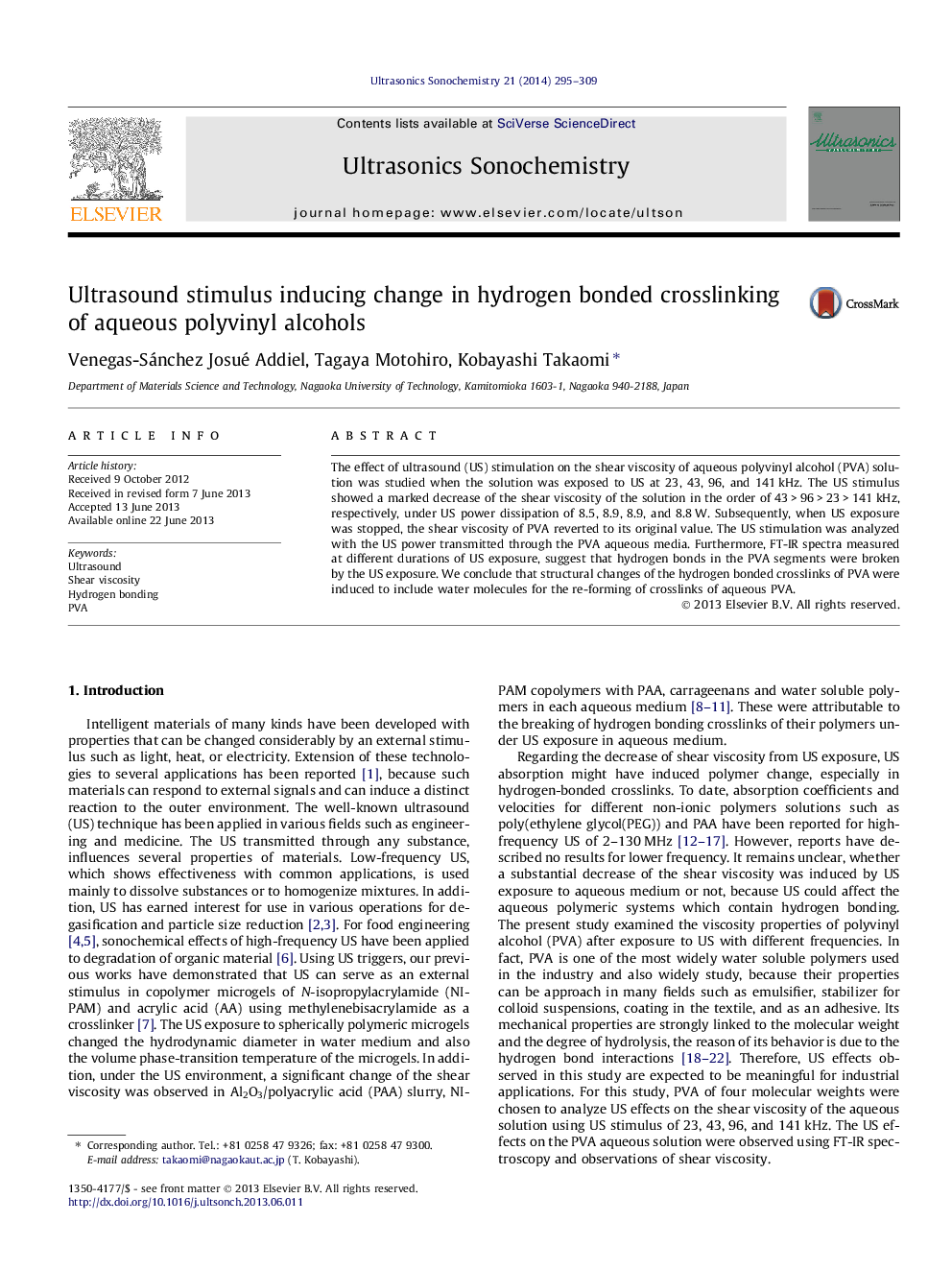| Article ID | Journal | Published Year | Pages | File Type |
|---|---|---|---|---|
| 10566117 | Ultrasonics Sonochemistry | 2014 | 15 Pages |
Abstract
The effect of ultrasound (US) stimulation on the shear viscosity of aqueous polyvinyl alcohol (PVA) solution was studied when the solution was exposed to US at 23, 43, 96, and 141Â kHz. The US stimulus showed a marked decrease of the shear viscosity of the solution in the order of 43Â >Â 96Â >Â 23Â >Â 141Â kHz, respectively, under US power dissipation of 8.5, 8.9, 8.9, and 8.8Â W. Subsequently, when US exposure was stopped, the shear viscosity of PVA reverted to its original value. The US stimulation was analyzed with the US power transmitted through the PVA aqueous media. Furthermore, FT-IR spectra measured at different durations of US exposure, suggest that hydrogen bonds in the PVA segments were broken by the US exposure. We conclude that structural changes of the hydrogen bonded crosslinks of PVA were induced to include water molecules for the re-forming of crosslinks of aqueous PVA.
Related Topics
Physical Sciences and Engineering
Chemistry
Chemistry (General)
Authors
Venegas-Sánchez Josué Addiel, Tagaya Motohiro, Kobayashi Takaomi,
